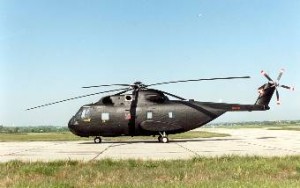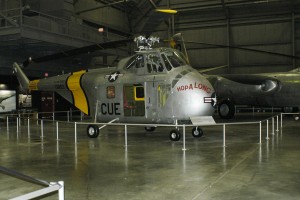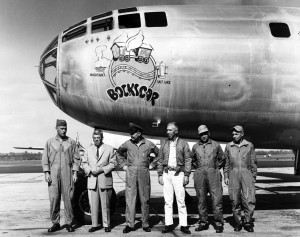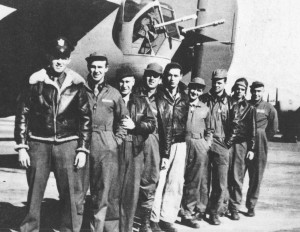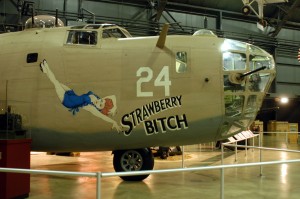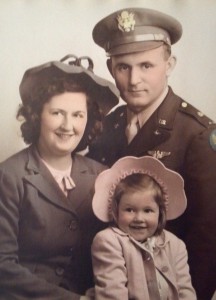
Col. Wilcox with his wife and daughter, following the end of WWII
Tomorrow is Veterans Day in the U.S. Originally called Armistice Day to celebrate victory in WWI, the holiday was declared by President Woodrow Wilson in 1919, in remembrance of those who made the ultimate sacrifice during that war. It was later expanded to include all veterans, including those who served and survived.
I’d like to honor one of the latter, the late Colonel Robert E. Wilcox, my husband’s grandfather. Col. Wilcox was the highly decorated pilot of a B-29 bomber, and served in Army Air Corps during WWII, and later in the U.S. Air Force in the Korean conflict.
He was a two-time POW. The first time, he was held in northern Japan in a concentration camp, and wasn’t released until Japan’s defeat. He’d been presumed dead for nearly a year by then – the military already had a headstone made for him and planned for placement in Arlington Cemetery. It was due to the efforts of the Red Cross that he was rescued at the war’s end, and this was something he never forgot. One of his hands was broken in multiple places, and he also credited the Red Cross for getting him prompt medical attention and for arranging multiple, complex (for the time) surgeries that restored to him the full use of his hand.
Despite his harrowing experience, he went on to serve in Korea a few years later, and again was taken prisoner.
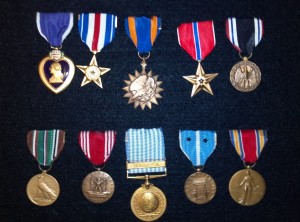 Colonel Wilcox’s accomplishments were many. The medals shown here recognize some of the missions and campaigns he served in during both wars. The Purple Heart was, of course, for the wounds he suffered while a prisoner of war. The medal on the upper right states was “Awarded for Honorable Service while a Prisoner of War, for the United States of America.” He also was recognized for completing 25 missions as a bomber pilot, denoted by the medal in the center on the top row. The lower center medal is for “Service in Defense of the Principles of the Charter of the United Nations” during his service in Korea.
Colonel Wilcox’s accomplishments were many. The medals shown here recognize some of the missions and campaigns he served in during both wars. The Purple Heart was, of course, for the wounds he suffered while a prisoner of war. The medal on the upper right states was “Awarded for Honorable Service while a Prisoner of War, for the United States of America.” He also was recognized for completing 25 missions as a bomber pilot, denoted by the medal in the center on the top row. The lower center medal is for “Service in Defense of the Principles of the Charter of the United Nations” during his service in Korea.
He also was awarded the Bronze Star and Silver Star.
Grandpa never talked about these awards, or his time in the military. Despite his achievements and service, he always seemed to regard it as a duty, simply something one did.
He always kept busy. After he retired from the Air Force after 20 years of service, he went to work as an electrical engineer for NCR, until his retirement from there 25 years later. Throughout his life, Grandpa Wilcox was always committed to serving others, and never forgot what others had done for him. He flew for the Civil Air Patrol during the 70s, and later, volunteered for the Red Cross along with his wife, my husband’s grandma Mary. When I met my husband in the early 90s, they volunteered a couple days a week, taking elderly people who were unable to drive, to doctors’ appointments, the grocery store or other necessary errands. They were also active in their church, and participated in activities to help others. They served in this capacity into their late seventies, until forced to stop by their own health issues.
Grandpa passed away in 2002, at the age of 84, two years after Grandma’s passing. Although I only knew him for the last ten years of his life, I consider that a privilege. It’s because of him and others like him, that we continue to enjoy the freedoms we have today.
I’m also privileged to have several friends, neighbors and coworkers who served, and to all of them I’m grateful.
Who will you thank tomorrow?



